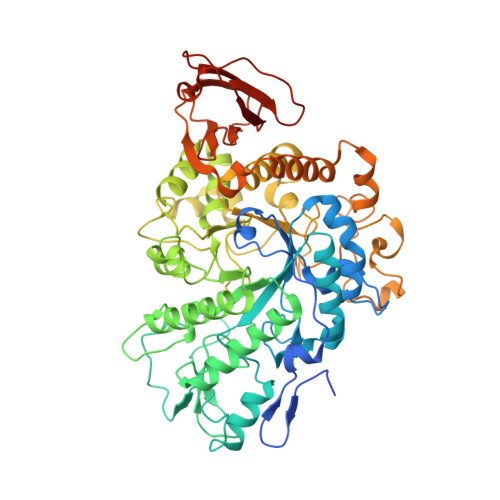Synthesis of alpha-glucan in mycobacteria involves a hetero-octameric complex of trehalose synthase TreS and Maltokinase Pep2.
Roy, R., Usha, V., Kermani, A., Scott, D.J., Hyde, E.I., Besra, G.S., Alderwick, L.J., Futterer, K.(2013) ACS Chem Biol 8: 2245-2255
- PubMed: 23901909
- DOI: https://doi.org/10.1021/cb400508k
- Primary Citation of Related Structures:
4LXF - PubMed Abstract:
Recent evidence established that the cell envelope of Mycobacterium tuberculosis, the bacillus causing tuberculosis (TB), is coated by an α-glucan-containing capsule that has been implicated in persistence in a mouse infection model. As one of three known metabolic routes to α-glucan in mycobacteria, the cytoplasmic GlgE-pathway converts trehalose to α(1 → 4),α(1 → 6)-linked glucan in 4 steps. Whether individual reaction steps, catalyzed by trehalose synthase TreS, maltokinase Pep2, and glycosyltransferases GlgE and GlgB, occur independently or in a coordinated fashion is not known. Here, we report the crystal structure of M. tuberculosis TreS, and show by small-angle X-ray scattering and analytical ultracentrifugation that TreS forms tetramers in solution. Together with Pep2, TreS forms a hetero-octameric complex, and we demonstrate that complex formation markedly accelerates maltokinase activity of Pep2. Thus, complex formation may act as part of a regulatory mechanism of the GlgE pathway, which overall must avoid accumulation of toxic pathway intermediates, such as maltose-1-phosphate, and optimize the use of scarce nutrients.
Organizational Affiliation:
School of Biosciences, University of Birmingham , Edgbaston, Birmingham B15 2TT, U.K.

















